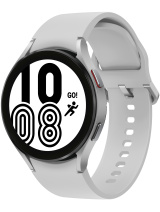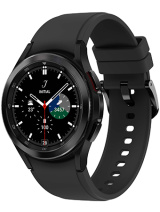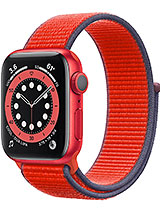Galaxy Watch 4 and Galaxy Watch 4 Classic hands-on By The Verge
- Today, we're getting our first look at Samsung's smartwatch collaboration with Google, with the Samsung Galaxy Watch 4, and the Galaxy Watch 4 Classic. They're one of the biggest deals in wearables in quite some time, because it's finally happening. After years of trying to go it alone with ties and old smartwatches, Samsung is finally biting the bullet and collaborating with Google on a smartwatch operating system. (upbeat music) You definitely get the sense with these smartwatches that Samsung's hang a little bit of a reset button with these wearables line up. Yes, there's the new Wear OS 3 operating system, which we'll get onto in a little bit, but Samsung is also taken this opportunity to simplify it's smartwatch range. So previously there were two lines, the Active and the Regular, and they both got kind of a regularly updated depending on whether or not Samsung felt like it.
But now there's the four classic, which is best thought of as a sequel to the Watch 3 and the regular Watch 4 which is the successor to the Active 2 from 2019, which yes means they've skipped the 3. It sounds complicated but when you look at them next to each other, it's a lot simpler. Basically the Galaxy Watch 4 is now the default and the Galaxy Watch 4 Classic is a slightly more premium model. The classic starts at $349 while the regular is $249. It's a little bit cheaper.
Both are available to pre-order from August 11th and they're shipping on August 27th. (upbeat music) So in terms of hardware, the Classic has one of those rotating bezels that we've liked so much on Samsung's previous smartwatches. Samsung wants you to think of this as the more premium of the two smartwatches and it's made from better materials like stainless steel. Whereas the regular Watch 4 is made of aluminum, or I'm sorry, aluminum. Meanwhile, the standard Galaxy Watch 4 is the one with a simpler design and materials, but both of them have a pair of buttons on the side for pressing.
Both are available in two sizes. The Watch 4 is a little bit more compact. It's available in 40 millimeters and 44 millimeters. While the Watch 4 Classic is 42 millimeters and 46 millimeters. But regardless of which version you go for, the screen sizes are the same.
It's 1.2 inches or thereabouts and 1.4. and the resolutions have also increased compared to previous models. But while one might be the sporty one and one might be the classy one, both of them share a lot of the same DNA. They're both powered by the same Samsung Exynos five millimeter processor. Both have 1.5 gigabytes of RAM and both have 16 gigabytes of storage. Battery capacities vary slightly between models, but whichever one you go for, Samsung reckons you'll get about 40 hours of battery life, depending on how you use it.
There's LTE on select models but if you're hoping for 5G, then you might be disappointed. Samsung says that the amount of data smartwatches have to process is just a little bit too small to make it worth it. But the bigger deal's probably the software these watches are running. It's Wear OS 3, which is the result of a collaboration between Google and Samsung. And it should hopefully combine the best of Samsung Tizen OS with the best of Google's Wear OS.
On Samsung's smartwatches specifically, the interface you're looking at is One UI watch, which is Samsung's skin sitting on top of Google's Wear OS operating system. Think of it as One UI on phones, which sits on top of Android. When it announced his collaboration with Samsung in May, Google promised a whole bunch of high-level benefits, like better battery life, faster loading apps and smoother animations, but these have never really been problems for Samsung smartwatches. So it's kind of difficult to tell how much of an impact they've had just yet. But there are other benefits here that are much more obvious, like finally having Google's apps and services on a Samsung smartwatch and the most important one here is Google maps because it means there's finally a capable native mapping app on the smartwatch itself.
Now I know a lot of you are going to be wondering what that means for voice assistance, given Bixby's reputation and Samsung doesn't have a far man's view just yet. It tells me the Google Assistant won't be available at launch but then it might arrive eventually. I should also mention for the sake of both you Bixby fans out there, that Samsung says its own apps and services aren't going anywhere. So that means Samsung Pay and smart things, which is great if you've already bought into Samsung's ecosystem. It'll also import some settings from your phone, as well as installing watch apps automatically when you have the phone version installed, which is frankly so much more simple than what Tizen did previously.
There's still an app store on the watch itself though should you so choose. And better yet, this stuff isn't Samsung only and should work on any Android phone running Android 7 and above so long as it has GMS. Beyond Samsung and Google, you also have to hope for having one fewer operating systems to target might mean better app support from third-party developers. Although it's not new for Samsung smartwatches, Spotify has an upcoming, which includes the option for offline listening and fingers crossed. This is a sign of things to come.
So sensors, health stuff, the first bear is worth talking about is a new three in one health sensor, which combines PPG, ECG and BIA sensors. That means there's an optical heart rate sensor, an electrical heart sensor and a bioelectric impedance analysis sensor, which basically means detection of everything from blood pressure to atrial fibrillation, blood oxygen levels and body composition. But Samsung's pitches, the new addition to the technical individually, you can also detect it as a whole using this body composition analysis tool. It's meant to give you a holistic view of your health ranging from everything from skeletal muscle to metabolic rate and BMI. And the tracking doesn't stop once you go to sleep.
Oh no. Samsung says that the watch can track your blood oxygen levels while you sleep and offers more insight into how your sleep has gone gently. Oh, and it'll also track your snoring, which seems rude, but okay. I'm broadly skeptical of sync tracking features like these because it's rare they offer any advice beyond, "Hey, you should go to sleep at the same time every night", but maybe Samsung's cracked it who knows. Samsung smartwatches have been our recommendation for anyone with an Android phone for quite some time, but it feels like Samsung's hit a little bit of a ceiling with what it can achieve while it's still running its own software.
That's what makes this year's smartwatches and Google and Samsung's collaboration in general so exciting. It banishes so many of those little niggles, like a lack of native Google apps that have been plaguing Samsung's recent watches. Last year, we said it was time for a change and this year we're finally getting up. So thank you so much for learning about Samsung's new wearables, but they also have foldables. If you want to learn more about those, then Chris Wedge probably has a video that's around here somewhere.
Source : The Verge



























